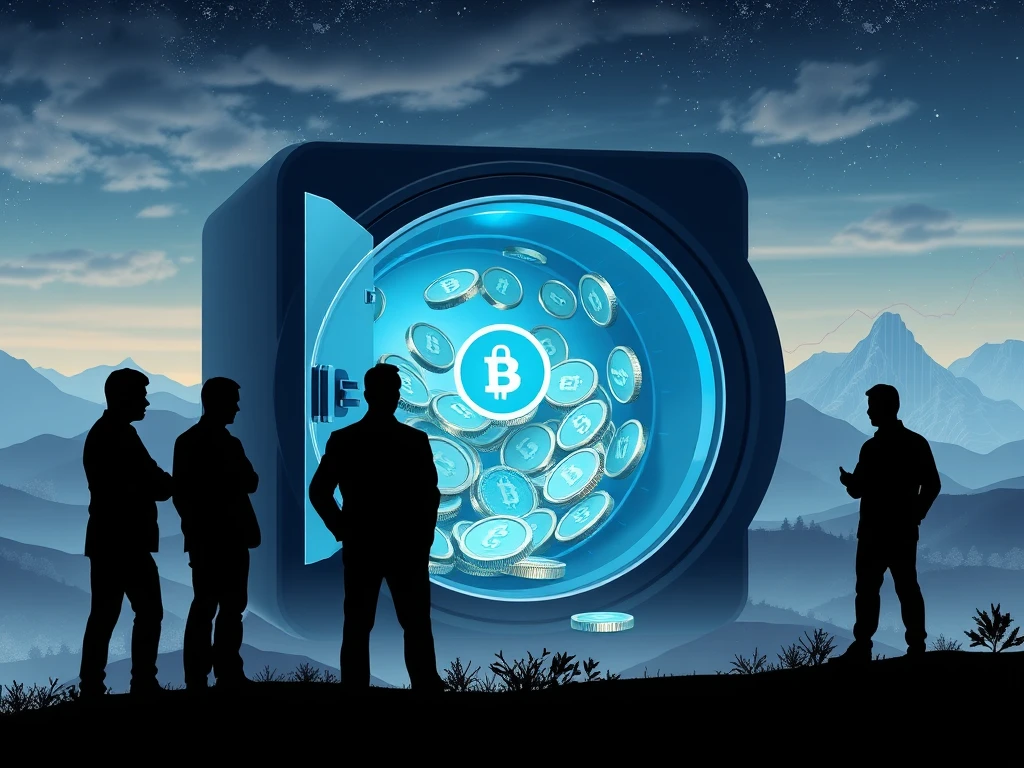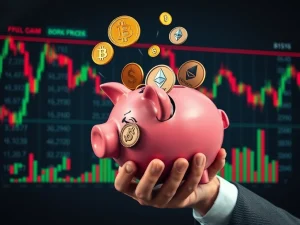Unlock Massive Profits: How VCs Master Token Unlocks & Crypto Trading Strategies

Ever wondered why some crypto prices seem to drop right after a major token release? It’s often tied to token unlocks, pivotal moments when previously restricted tokens enter circulation. While this can feel chaotic for retail investors, for venture capitalists (VCs) and large institutions, these events are carefully planned strategic opportunities. Understanding how these major players handle token unlocks can provide valuable insights for your own crypto trading strategies.
Decoding Token Unlocks and the Vesting Schedule
At its core, a token unlock releases tokens held back from initial distribution. These tokens are typically part of a project’s vesting schedule, a plan that dictates the gradual release of tokens to early investors, team members, and advisors over time. A typical vesting schedule includes:
- **Cliff period:** An initial phase where no tokens are released, ensuring long-term commitment.
- **Linear vesting:** After the cliff, tokens are released incrementally over the remaining period.
The goal of vesting is to align early stakeholders’ interests with the project’s long-term success and manage supply. However, a large influx of tokens can still lead to selling pressure. We’ve seen this with projects like Pyth (PYTH), Arbitrum (ARB), and Aptos (APT) experiencing price dips around major unlocks. Even newer tokens like Ethena (ENA) show similar patterns. Savvy traders often anticipate these events, leading to pre-unlock sell-offs.
Inside VC Crypto Trading Around Unlocks
VCs approach token unlocks with different tools and objectives than typical retail traders. Their aim is significant returns on early investments. Token unlocks are key moments to realize these gains using sophisticated methods:
Utilizing OTC Crypto Deals for Large Sales
One primary method for VCs to sell large token volumes is through Over-the-Counter (OTC) desks. Instead of selling on public exchanges and causing massive price drops, VCs transact directly with buyers—usually other institutions or market makers. This private transaction, often at a slight discount, avoids slippage, maintains anonymity, prevents market panic, and allows for customized deal structures.
Staggered Sales and Gradual Distribution
VCs typically avoid dumping all tokens at once. They often use a staggered approach, selling portions during market strength and potentially accumulating during dips to lower their average cost. This calculated distribution aims to secure profits without overly disrupting the market price.
Sophisticated Hedging with Derivatives
A complex VC strategy involves hedging unlock exposure using derivatives. Months before an unlock, VCs might use contracts to lock in a selling price, reducing risk. This includes:
- **Shorting futures/perpetual swaps:** Profiting from potential price drops to offset losses on unlocked tokens.
- **Purchasing put options:** Gaining the right to sell tokens at a specific price floor.
- **Selling call options:** Generating premium income while committing to sell at a set price if the option is exercised.
These strategies, often involving market makers to create delta-neutral positions, allow VCs to manage risk whether the price moves up or down.
Factors Influencing VC Selling Decisions
VCs consider several factors when deciding how and when to sell unlocked tokens:
- **Market Sentiment:** Bearish sentiment increases the likelihood of selling; bullish sentiment might encourage holding.
- **Proportion of Unlocked Tokens:** A large unlock relative to circulating supply signals higher potential selling pressure.
- **Recipient Type:** Unlocks for early investors/teams often lead to more selling than those for community rewards.
- **Project Fundamentals:** Hitting milestones can boost confidence, potentially leading VCs to hold longer.
- **Portfolio Diversification:** Selling might be part of rebalancing or funding new investments.
Team and early investor unlocks often correlate with sharper price declines, while ecosystem-building unlocks can sometimes have a positive effect.
Criticisms of VC Influence
The power VCs hold regarding token unlocks faces criticism:
- **Misaligned Interests:** Critics argue the fixed unlock schedule contrasts with volatile demand, allowing VCs to profit even if prices drop significantly after unlocks, impacting retail buyers.
- **Information Asymmetry:** VCs often have deeper project insights, creating an advantage over retail investors.
However, it’s important to acknowledge the vital role VCs play in providing early capital that enables project development.
Lessons for Retail Investors from VC Crypto Trading
While you may not have access to OTC desks, you can learn from VC behavior to navigate token unlocks more effectively:
- **Do Your Research (DYOR):** Always check vesting schedules and unlock dates using resources like Token Unlocks. Understand the amount of supply released and who receives it.
- **Anticipate Selling Pressure:** Assume large unlocks, especially for early investors, will likely increase selling pressure. Consider reducing exposure or using stop-losses beforehand.
- **Avoid Buying Before Major Unlocks:** Prices often dip in anticipation and after the event. Don’t buy hoping for a rally right before a large unlock.
- **Monitor Onchain Data and Volume:** Look for large token transfers from project/VC wallets to exchanges or OTC desks as potential signals of impending sales.
- **Evaluate Project Fundamentals:** A project consistently hitting milestones and demonstrating utility might handle unlock pressure better.
Token unlocks are a fundamental part of the crypto market. By understanding the motivations and sophisticated crypto trading strategies VCs employ, retail investors can better navigate these volatile periods, potentially turning anticipated pitfalls into opportunities for smarter trading decisions.
This article does not contain investment advice or recommendations. Every investment and trading move involves risk, and readers should conduct their own research when making a decision.








